News
What golfers should do instead of icing injuries

As a follow-up to “Are golfers wasting their time icing injuries?” I had a chance to speak with Gary Reinl, author of Iced! The Illusionary Treatment Option about what golfers ought to do instead of, well wasting their time icing injuries.
Reinl has spent more than 40 years in sports medicine and has done everything from train professional athletes, to develop strength-training programs for pregnant women, to orchestrate rehabilitation programs for injured workers.
With the publication of Iced!, Reinl pointed out the erroneous nature of some popular assumptions about injury and treatment and suggested a different way forward, so he seemed like a natural point of contact.
My questions, below.
Strains and pulled muscles are common for golfers. Is there any place for icing in the treatment of these routine golf injuries?
No. Unless of course you want to delay healing, increase swelling, cause additional damage, shut of the signals that alert you to harmful movement and provide false hope (make yourself believe that you are doing something good when in fact you are doing the opposite).
Hitting out of a gnarly lie in the deep rough, you badly hurt your wrist. You know you can’t continue playing, so you head back to the clubhouse. Someone fetches you a bag of ice. What do you do next?
Politely thank them and tell them that you are going to get a professional medical evaluation before you initiate treatment (until you confirm the extent of the problem, “friendly” advice is often counterproductive and almost always ill-advised).
That said, once your doctor has given you the green light to begin facilitating the healing process via muscle activation, follow this basic rule: “Use your brain, never cause pain.” If anything beyond lightly wiggling your fingers causes pain, limit activation to finger wiggling. This is not a contest or game. Think: “No pain, all gain.”
If your doctor has written an order for you to use an FDA-cleared muscle activation device, use it as directed (several hours per day for the first couple of days is pretty standard). Regardless of how you activate your muscles, never forget that healing is contingent upon muscle activation not absolute stillness.
You’ve just walked 36 holes. You drive home and your legs are screaming. What’s the best way to deal with the situation, instead of reaching for the ice pack?
Since the “ice pack” actually makes things worse, doing nothing is better than icing.
What’s best? Lightly activate the muscles that are tired and or sore. Muscle activation or “active recovery” is not only the best way to facilitate the healing process, it is, in essence, the key to tissue regeneration. Absolute stillness is the proverbial enemy.
What are the adverse effects of icing on golf-related injuries, generally speaking?
Icing damaged tissue delays healing, increases swelling, causes additional damage, shuts of the signals that alert you to harmful movement and makes you believe that you are doing something good, when in fact you are doing the opposite. Additionally, when you fail to optimally heal, you risk dampening your golf skills and setting yourself up for further injury.
How did we get to the point where reducing swelling and inflammation via icing are seen as good things?
First of all, icing damaged tissue does not reduce swelling or inflammation. Delay it? Yes. Increase it? Yes. Reduce it? No.
How did the medical community get it so wrong?
It all started back in 1962 when a doctor named Ronald Malt reattached the severed limb of a 12-year-old boy named Everett Knowles. Since this was the first operation of its kind, it made big news around the world. When asked by reporters, “What’s the best way to protect the severed body part while transporting it to the hospital?” The doctor responded something like this: “Keep it out of the sun, keep it cool, and put it on ice if possible.”
Over the years, the public converted the doctor’s very specific recommendation that applied only to severed body parts to “put ice on any damaged tissue,” and the myth took hold: The “ice age” was born.
Interestingly, the godfather of the ice age, Gabe Mirkin, MD, recently recanted his decades-old recommendation and now says that icing damaged tissues delays healing.
Are there any times a golfer should consider using ice?
Yes! No one likes a warm margarita. Cheers!
- LIKE2
- LEGIT1
- WOW0
- LOL0
- IDHT0
- FLOP0
- OB0
- SHANK1
Equipment
Spotted: Tommy Fleetwood’s TaylorMade Spider Tour X Prototype putter
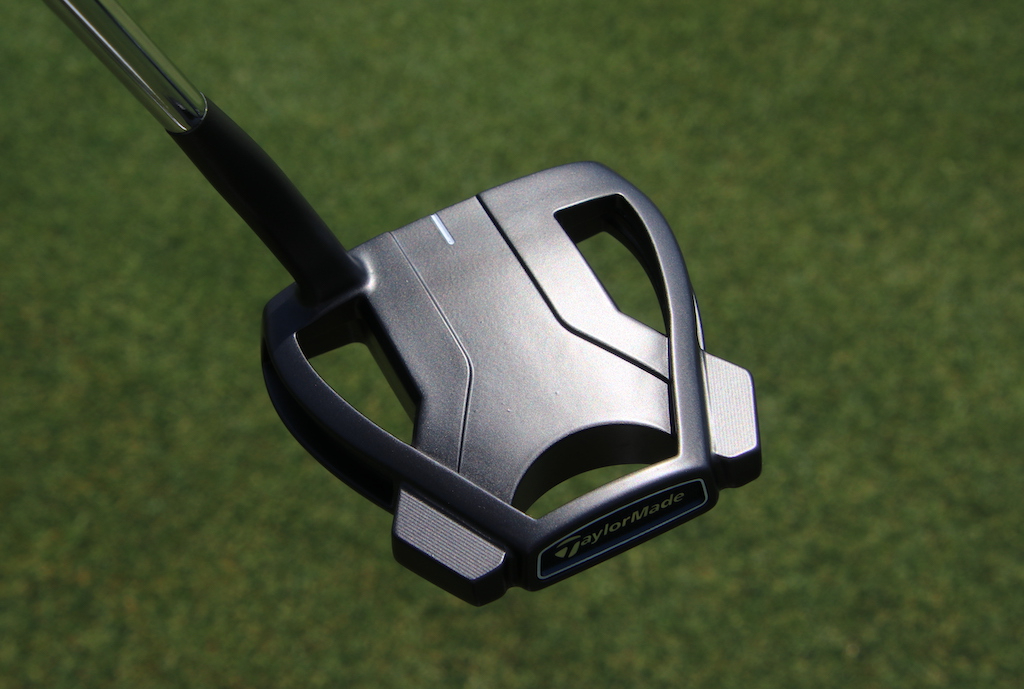
Tommy Fleetwood has been attached to his Odyssey White Hot Pro #3 putter for years now. However, this week at the Wells Fargo Championship, we did spot him testing a new putter that is very different, yet somewhat similar, to his current gamer.
This new putter is a TaylorMade Spider Tour X head but with a brand new neck we haven’t seen on a Spider before. A flow neck is attached to the Spider head and gives the putter about a 1/2 shaft offset. This style neck will usually increase the toe hang of the putter and we can guess it gets the putter close to his White Hot Pro #3.
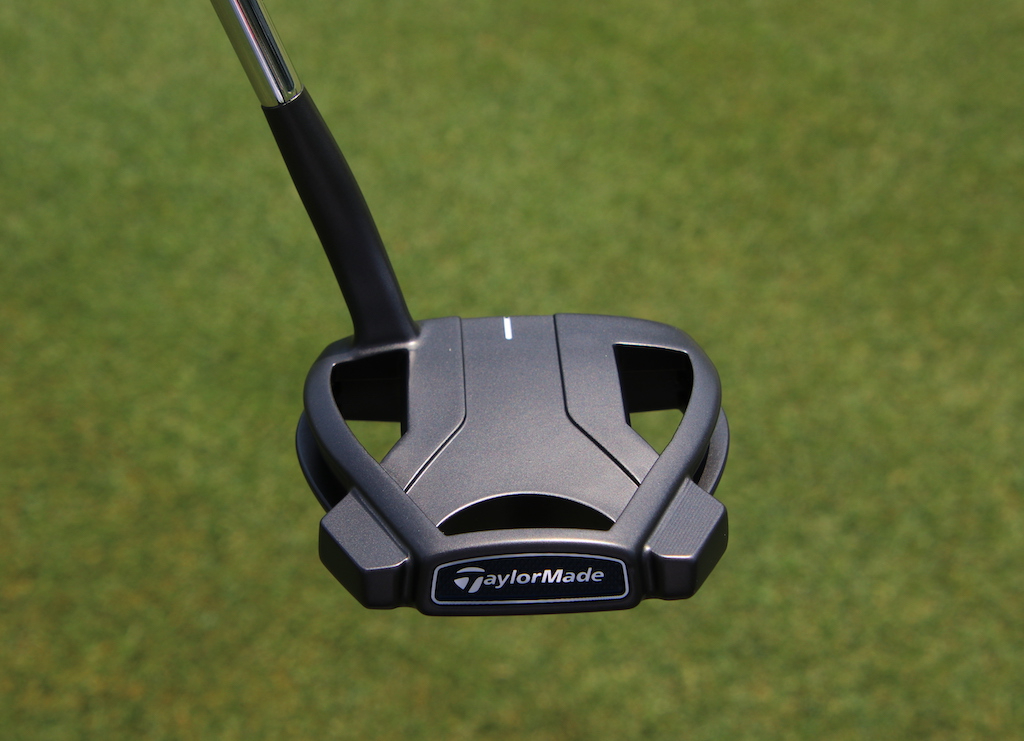
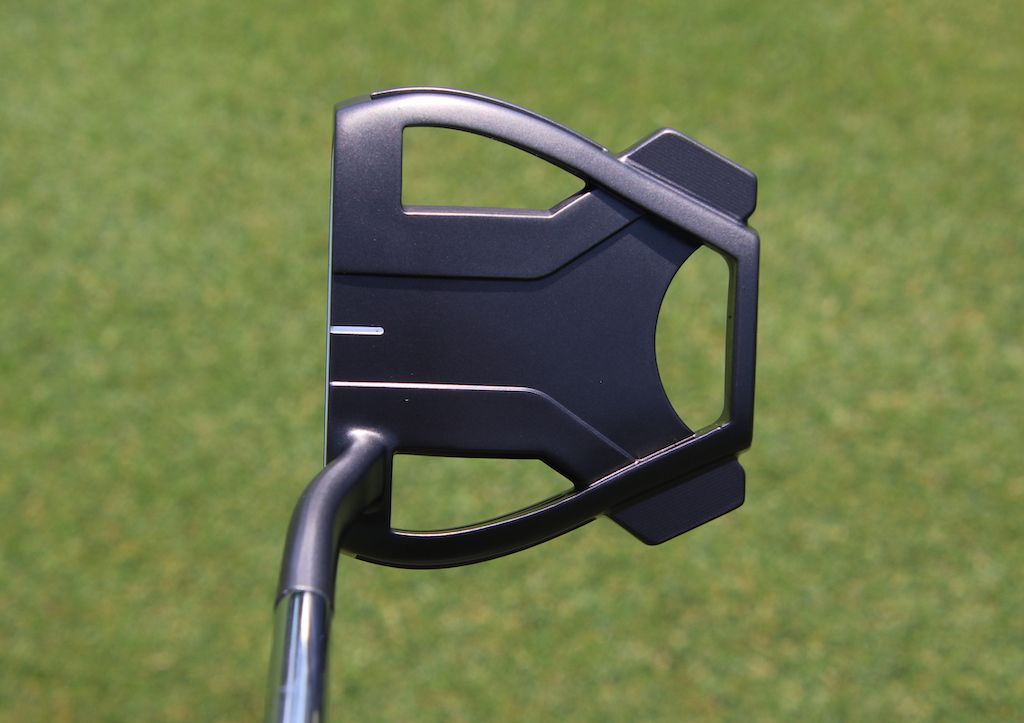
Another interesting design is that lack of TaylorMade’s True Path alignment on the top of the putter. Instead of the large white center stripe, Tommy’s Spider just has a very short white site line milled into it. As with his Odyssey, Tommy seems to be a fan of soft inserts and this Spider prototype looks to have the TPU Pure Roll insert with 45° grooves for immediate topspin and less hopping and skidding.
The sole is interesting as well in that the rear weights don’t look to be interchangeable and are recessed deep into the ports. This setup could be used to push the CG forward in the putter for a more blade-like feel during the stroke, like TaylorMade did with the Spider X Proto Scottie Scheffler tested out.
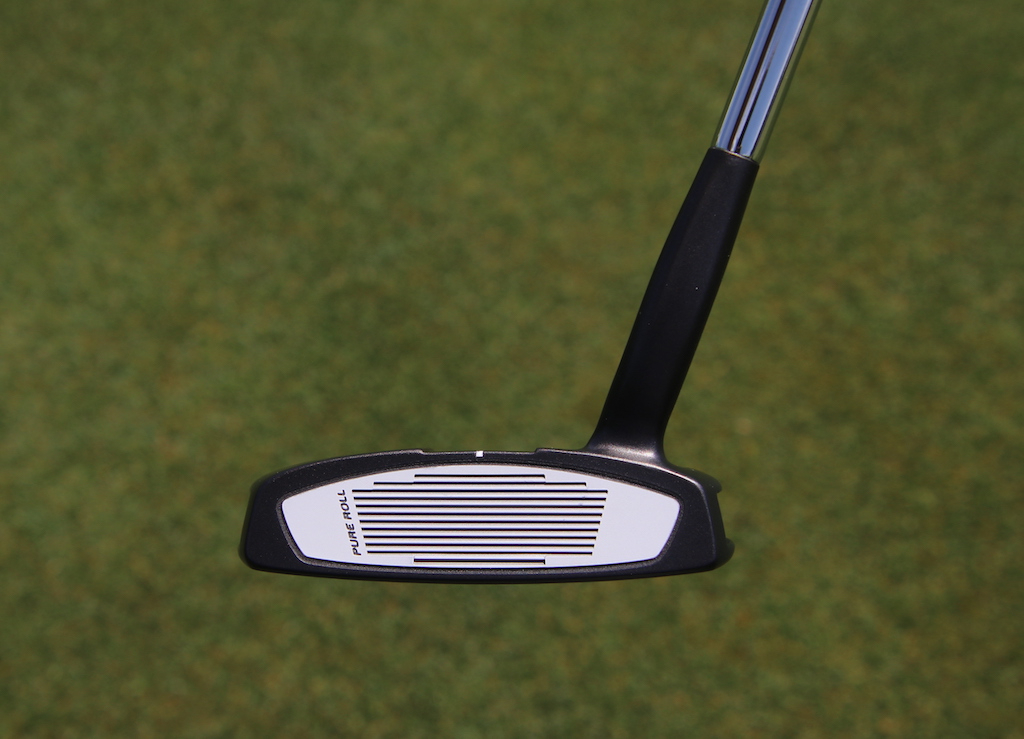
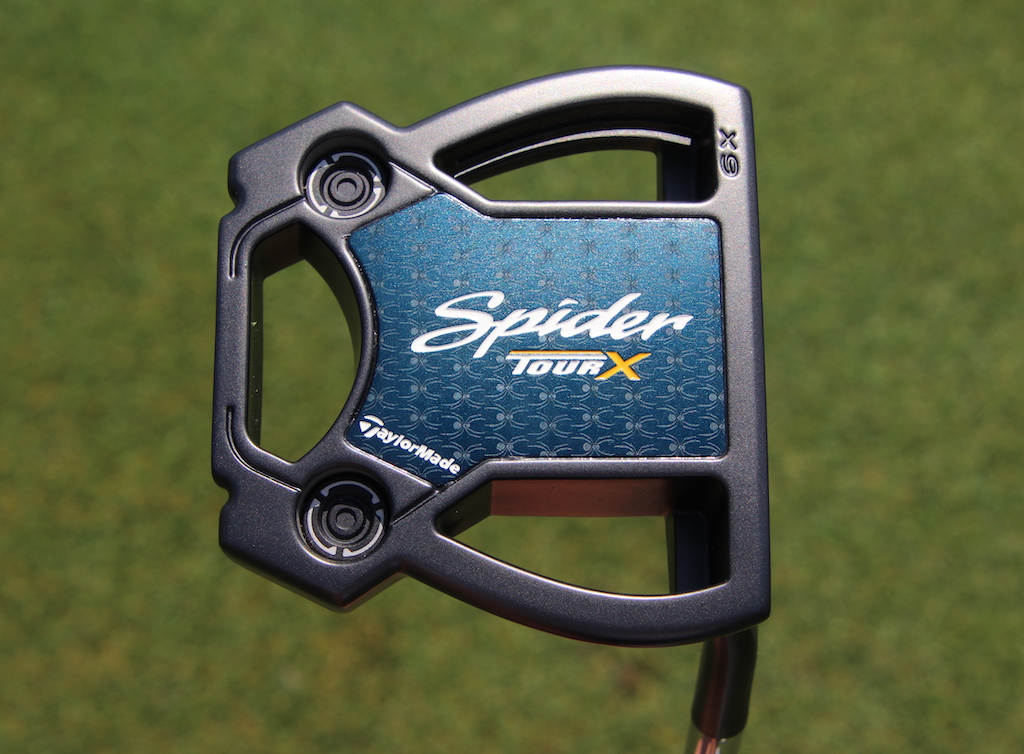
Tommy’s putter is finished off with an older Super Stroke Mid Slim 2.0 grip in blue and white. The Mid Slim was designed to fit in between the Ultra Slim 1.0 and the Slim 3.0 that was a popular grip on tour.
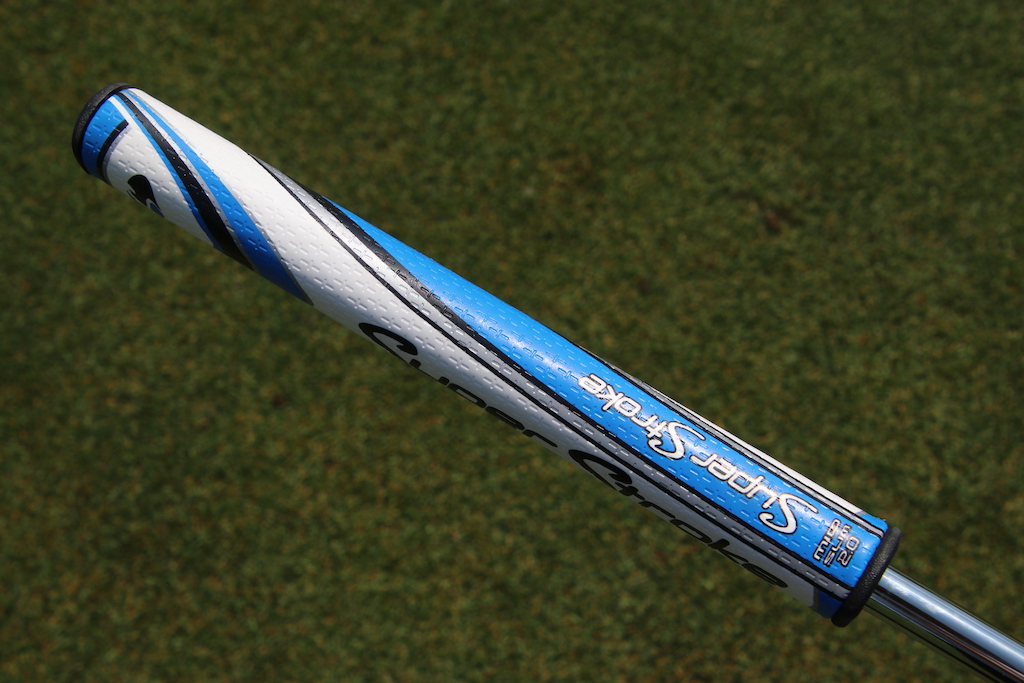
- Check out the rest of our photos from the 2024 Wells Fargo Championship
- LIKE1
- LEGIT1
- WOW1
- LOL1
- IDHT0
- FLOP0
- OB0
- SHANK0
Equipment
Rickie Fowler’s new putter: Standard-length Odyssey Jailbird 380 in custom orange
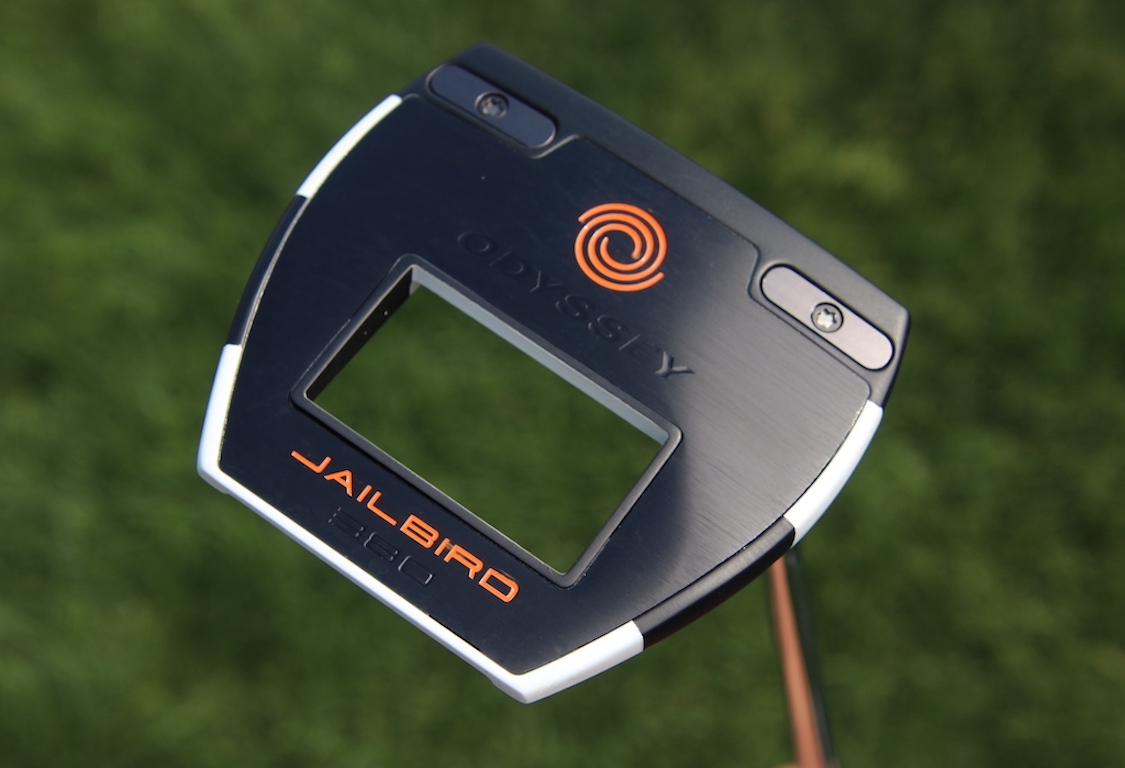
Editor’s note: This is an excerpt from a piece our Andrew Tursky originally wrote for PGATour.com’s Equipment Report. Head over there for the full article.
…The Jailbird craze hasn’t really slowed down in 2024, either. According to Odyssey rep Joe Toulon, there are about 18-20 Jailbird putter users on the PGA TOUR.
Most recently, Akshay Bhatia won the 2024 Valero Texas Open using a broomstick-style Odyssey Jailbird 380 putter and Webb Simpson is switching into a replica of that putter at the 2024 Wells Fargo Championship.
Now, Fowler, who essentially started the whole Jailbird craze, is making a significant change to his putter setup.
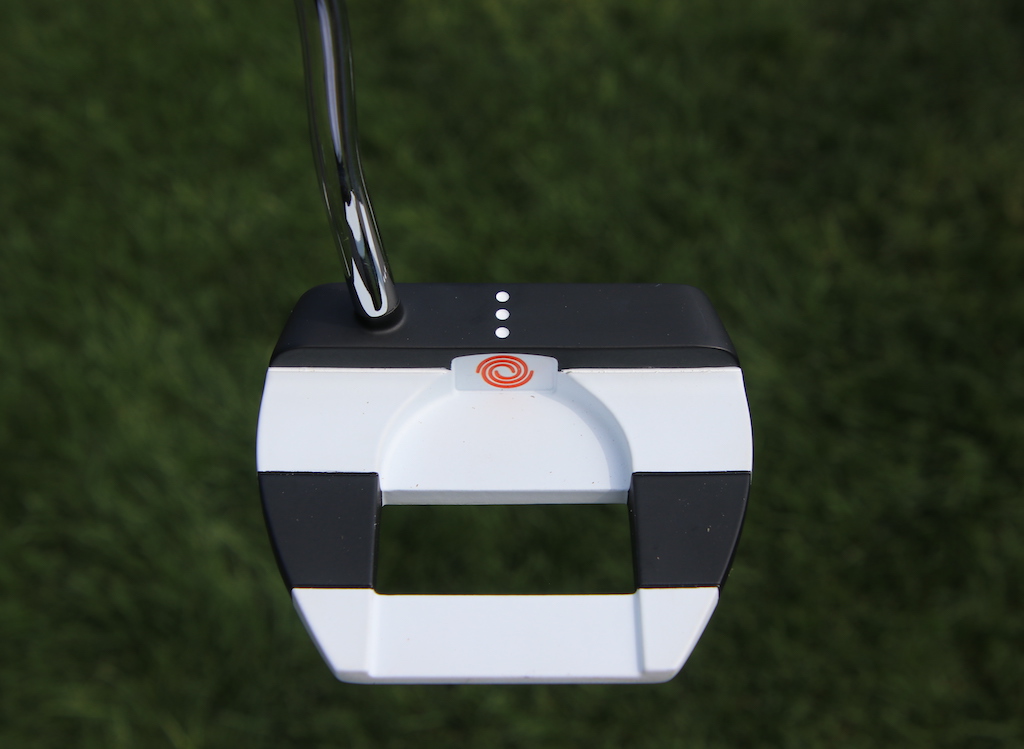
Fowler, who has had a couple weeks off since the 2024 RBC Heritage, started experimenting with a new, custom-orange Jailbird 380 head that’s equipped with a standard 35-inch putter build, rather than his previous 38-inch counter-balanced setup.
According to Fowler, while he still likes the look and forgiveness of his Jailbird putter head, he’s looking to re-incorporate more feel into his hands during the putting stroke.
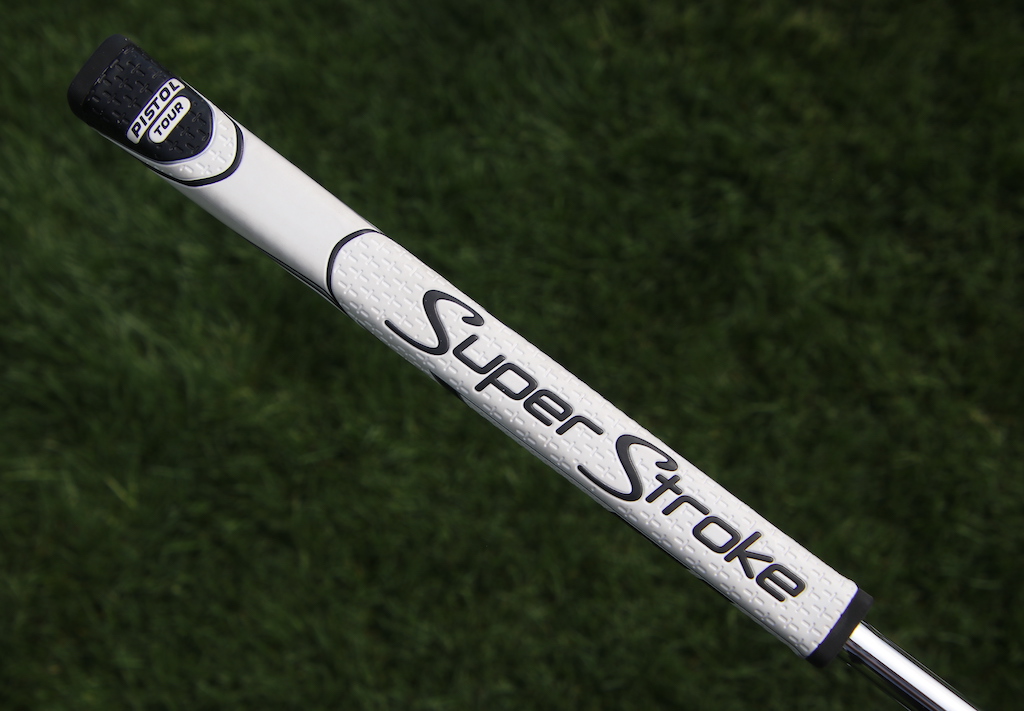
He told GolfWRX.com on Tuesday at the Wells Fargo Championship that the 38-inch counterbalanced setup “served its purpose” by helping him to neutralize his hands during the stroke, but now it’s time to try the standard-length putter with a standard-size SuperStroke Pistol Tour grip to help with his feel and speed control.
Although Fowler was also spotted testing standard-length mallets from L.A.B. Golf and Axis1 on Tuesday, he confirmed that the custom Odyssey Jailbird 380 is the putter he’ll use this week at the 2024 Wells Fargo Championship.
Head over to PGATour.com for the full article.
- LIKE23
- LEGIT5
- WOW2
- LOL3
- IDHT0
- FLOP2
- OB0
- SHANK4
Equipment
Details on Justin Thomas’ driver switch at the Wells Fargo Championship
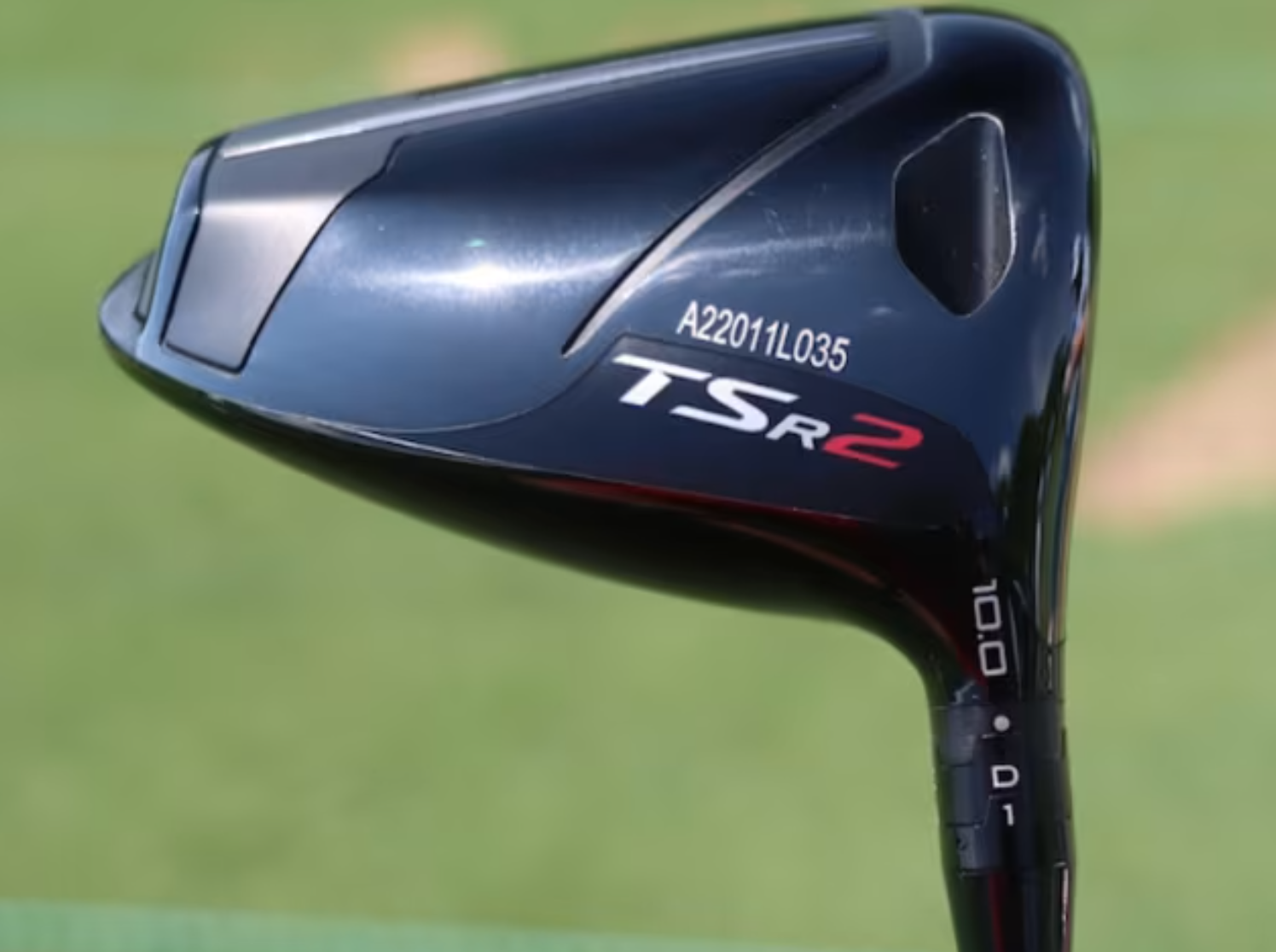
Editor’s note: This is an excerpt from a piece our Andrew Tursky originally wrote for PGATour.com’s Equipment Report. Head over there for the full article.
So, with a couple of weeks off following his latest start at the 2024 RBC Heritage, Thomas sought to re-address his driver setup with the remote help of Titleist Tour fitting expert J.J. Van Wezenbeeck. About two weeks ago, Thomas and Van Wezenbeeck reviewed his recent driver stats, and discussed via phone call some possible driver and shaft combinations for him to try.
After receiving Van Wezenbeeck’s personalized shipment of product options while at home, Thomas found significant performance improvements with Titleist’s TSR2 head, equipped with Thomas’ familiar Mitsubishi Diamana ZF 60 TX shaft.
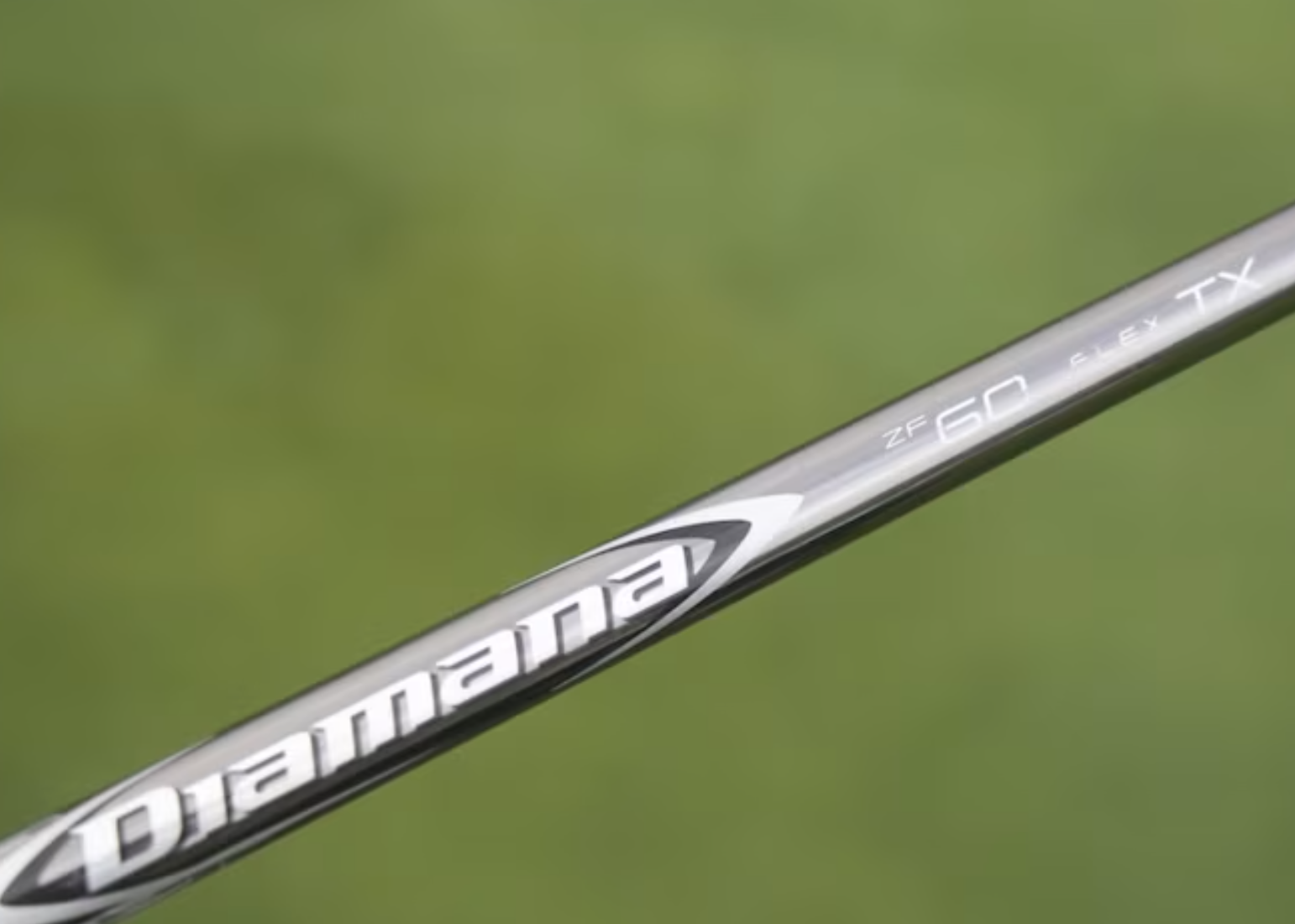
Compared to Thomas’ longtime TSR3 model, the TSR2 has a larger footprint and offers slightly higher spin and launch characteristics.
According to Van Wezenbeeck, Thomas has picked up about 2-3 mph of ball speed, to go along with 1.5 degrees higher launch and more predictable mishits.
“I’d say I’d been driving it fine, not driving it great, so I just wanted to, honestly, just test or try some stuff,” Thomas said on Tuesday in an interview with GolfWRX.com at Quail Hollow Club. “I had used that style of head a couple years ago (Thomas used a TSi2 driver around 2021); I know it’s supposed to have a little more spin. Obviously, yeah, I’d love to hit it further, but if I can get a little more spin and have my mishits be a little more consistent, I felt like obviously that’d be better for my driving…
“This (TSR2) has been great. I’ve really, really driven it well the week I’ve used it. Just hitting it more solid, I don’t know if it’s the look of it or what it is, but just a little bit more consistent with the spin numbers. Less knuckle-ball curves. It has been fast. Maybe just a little faster than what I was using. Maybe it could be something with the bigger head, maybe mentally it looks more forgiving.”
Head over to PGATour.com for the full article.
- LIKE17
- LEGIT1
- WOW1
- LOL2
- IDHT0
- FLOP0
- OB0
- SHANK7
-

 19th Hole2 weeks ago
19th Hole2 weeks agoJustin Thomas on the equipment choice of Scottie Scheffler that he thinks is ‘weird’
-

 19th Hole2 weeks ago
19th Hole2 weeks ago‘Absolutely crazy’ – Major champ lays into Patrick Cantlay over his decision on final hole of RBC Heritage
-

 19th Hole2 weeks ago
19th Hole2 weeks agoLET pro gives detailed financial breakdown of first week on tour…and the net result may shock you
-

 19th Hole2 days ago
19th Hole2 days agoReport: LIV star turns down PGA Championship invite due to ‘personal commitments’
-

 19th Hole1 week ago
19th Hole1 week agoGary Player claims this is what ‘completely ruined’ Tiger Woods’ career
-

 Whats in the Bag2 weeks ago
Whats in the Bag2 weeks agoTeam McIlowry (Rory McIlroy, Shane Lowry) winning WITBs: 2024 Zurich Classic
-

 19th Hole3 weeks ago
19th Hole3 weeks agoTaylorMade signs 15-year-old AJGA Rolex Junior Player of the Year to an NIL contract
-

 Equipment1 week ago
Equipment1 week agoGolf fans left surprised by LIV’s choice of course for its 2024 individual championship event



















bobby
Dec 26, 2014 at 11:39 pm
1) Icing damaged tissue delays healing
– I ice my injury and I’m much more comfortable. reduced my pain without taking dangerous oral drugs like nsaid’s. An injury that i may have caused me to take to take 2-3 off is no 2-4 days. But I’m comfortable and in considerably less pain.
2) Icing damaged tissue increases swelling
– Icing damaged tissue controls the rate at which fluids reach the injured site. As well as causing tissue to constrict and disperse some of the painful inflammation. Tissues warm up and loosen up and of course due to signals still be sent throughout the body, there is a backup of fluids that rush the area. Hence why icing shouldn’t be a one time application.
3) Icing damaged tissue causes additional damage
– the damage proper icing may induce and far less than the potential damage from inflammation
4) Icing damaged tissue shuts off the signals that alert you to harmful movement
– Your basically telling the people icing may numb and reduce pain at the site of injury. Don’t forget to mention all the over the counter drugs they probably take that do the same thing. But leave out the part that if their mission is to reduce pain, as safely as possible those drugs and patches are out of the equation. Pain is the signal your body uses because it afraid of injury. That does not mean every time you are in pain you are damaging tissue.
5) Icing damaged tissue provides false hope; you think you’re doing something good but in fact you are doing the opposite.
– ice like drugs are never going to fix the underlying problem, why your hurt. The problem is that if you were stronger, if you have perfect mechanics and posture you will properly treating yourself and decreasing your chances of that injury “flaring up” again.
bobby
Dec 26, 2014 at 11:18 pm
How about you guys use your brain. Do you all believe everything people tell you. At what point did you put ice on an injury and believe that you have completely stopped all the swelling.
You ice injuries you ice torn soft tissues regardless of cause. Whether it be purposely from from training or accidentally you must “CONTROL” inflammation. Elimination is impossible. Inflammation is the bodies attempt to remove undesirable, damaged tissue before repair.
But if you believe this crap, that icing to reduce pain and inflammation is a mistake, make sure you don’t take advil and other NSAID’s (Non-steriodal anti-inflammatory drugs) for you pain. Besides 300,000 hospitalized each year form NSAID’s and 10-15% of those people die. But hey ice must be the dumbest thing you can do right !?!??
Another idea for you fools. Why is it very important for someone to undergo SURGERY IMMEDIATELY after tearing their Achilles . Its because the inflammatory process is there for debridment. To remove damaged tissue. If someone waits more than 24 hrs to have surgery the inflammation has already removed so much of the tissue that the two ends cannot reach. This means tissue beyond the initial site of injury was deemed damaged because the inflammatory process was not managed properly. Thus not allowing the body to initiate the remodeling phase.
You sprained your ankle. You are in pain. You having swelling impairing movement and or strength. Here are your options.
1. Take a drug that is going to be spread to your ankle, but also your brain, your liver, your heart. This sounds harmless. But is it really?
2. You can ice your injury, REDUCE pain and inflammation. KEYWORD: reduce, we can never COMPLETELY stop our body processes. Way to complicated to accomplish.
Dan M
May 16, 2014 at 6:12 pm
Thanks to GolfWRX for bringing this information to the golf community. The theory that ice doesn’t help healing is entirely plausible to me. I’ve worked in medical research for 20 years, and theories that have been accepted as gospel for years are constantly overturned. I used to ice my sore back religiously after playing golf, but with age and laziness stopped doing it. Now my back feels better sooner — I recover faster. I stopped taking Advil for aches and pains years ago.
Icing injuries has been so universal. It’s hard for people to accept that there is evidence now that it doesn’t help.
Gary Reinl
May 17, 2014 at 11:33 am
Hi Dan M, Thanks for your informed comments. I agree, the theory that ice “helps” the healing process was disproved years ago. That said “old habits die hard!”
PS: If you want a free autographed copy of my book, please go to garyreinl.com and leave me a message (and your mailing address).
The MELTDOWN continues!
Gary Reinl
@TheAntiIceMan
Iceman
May 15, 2014 at 11:53 pm
Everybody, just ice it.
Besides talking some mumbo-jumbo about activating muscles to heal or some bull stink like that, these yahoos don’t take into account that in humans, we feel PAIN with the inflammation and damage. If you don’t, then you’re numb already and or are not human at all to begin with. Tend to the pain and reduce it as well as inflammation at the same time. That’s why they’re called anti-inflammatory drugs (NSAIDs) because they do both – effectively and cheaply. Why do you think there is such a HUGE market for PEDs and other banned drugs for recovery and pain management? Because the things work and work great.
For the rest of us, for minor bumps and bruises, ice it. You’ll feel better for it.
Gary Reinl
May 17, 2014 at 9:10 am
“Mumbo-jumbo” … fortunately, ignorance is not contagious.
Loading, which is also known as active recovery (which activates muscle), is essential to achieving optimal healing of damaged tissue regardless as to whether you are merely tired and/or sore from a scheduled training session or significantly injured from an unplanned collision with an opponent’s outstretched leg that has left you upside down and twisted in the middle of a basketball court.
Here’s a relevant excerpt from my book “ICED! … The Illusionary Treatment Option”.
“Loading of Healing Bone, Fibrous Tissue, and Muscle: Implications for Orthopedic Practice:
Joseph A. Buckwalter, M.S., M.D., & Alan J. Grodzinsky, Ph.D.
Journal of the American Academy of Orthopedic Surgeons,
September/October 1999
One of the most important concepts in orthopedics in this
century is the understanding that loading accelerates
healing of bone, fibrous tissue, and skeletal muscle.”
Join the MELTDOWN!
Gary Reinl
@The AntiIceMan
Ice Ice Baby
May 17, 2014 at 11:52 pm
OK. Allow me to continuously PUNCH you in the face, right above the eye over and over for about 30 minutes straight, and see if you can “activate” those muscles to aid in recovery thereafter. Or would you prefer that I use ice on it to dull the pain and to reduce inflammation and swelling?
I will administer ice and cooling to that area of anybody who gets punched as such, as it has been shown, for a couple millennia, that icing will reduce swelling and bruising immediately.
We’re not talking about torn muscles or tendons here – we’re talking about inflamed tissues and muscles.
Therefore, use ICE.
Gary Reinl
May 18, 2014 at 4:53 pm
Hi Dan M, Thanks for your informed comments. I agree, the theory that ice “helps” the healing process was disproved years ago. That said “old habits die hard!”
PS: If you want a free autographed copy of my book, please go to garyreinl.com and leave me a message (and your mailing address).
The MELTDOWN continues!
Gary Reinl
@TheAntiIceMan
Gary Reinl
May 18, 2014 at 4:54 pm
Hi Ice Ice Baby,
First off, contrary to your claim, icing damaged tissue has not been used for millennia — not even close.
Second, as I am sure that you are aware, inflammation is the first phase of the life-saving healing process (e.g. without it, you will not heal — not even you). So, fortunately for even the least-informed, ice can only delay this process.
Further, swelling — a product of the inflammatory process — can only be evacuated through the inherently passive lymphatic system and thus can only be accelerated through movement (e.g. muscle activation). Thus, again, you can delay swelling (and, through icing, worsen the backup of it), but not reduce it. Keep in mind, that when the tissue rewarms, the inflammatory (healing) process resumes (that is why you see boxers who get hit in the face “30 times” during a fight all swollen the next day — gasp! — even if they iced).
Regarding your claim that ice will “dull the pain,” you are correct. Icing damaged will provide temporary pain relief. But, with that said, it will also delay healing, cause additional damage, increase swelling, shut of the signals that alert you to harmful movement, and provide false hope (you believe that you are doing something good when in fact you are doing the opposite). So, no, I wouldn’t put ice on such an injury because, obviously, the negatives far outweigh the positives.
Gary Reinl
@TheAntiIceMan
Phil
May 15, 2014 at 9:27 am
What about arthritic knees?
Nick
May 15, 2014 at 1:31 am
Love it how “buy my book” manages to appear in just about every response from the author. Classy.
Charlie
May 14, 2014 at 10:55 pm
Any advice for a nasty case of dequervain’s tendonitis in my left hand from golf? Please help!
Iceman
May 15, 2014 at 11:41 pm
Ice it, wrap some SALONPAS around it
mark d
May 14, 2014 at 6:06 pm
Had my shoulder rebuilt in February at the Cleveland Clinic. They sent me home with little cooler/pump/jacket thing to chill my shoulder at regular intervals.
Needless to say, all the sports med specialists at the Clinic with their many, many years of clinical training, research and success must be wrong.
That said, “no pain, all gain.” is very good advice if you have an injury. Heal first. Work out later.
Gary Reinl
May 15, 2014 at 9:17 am
Hi mark d,
Ironically, researchers from the Cleveland Clinic are the ones that discovered a key reason why icing damaged tissue is a bad idea (see their below article entitled “Hold the Ice” – their title, not mine).
“Hold the Ice?
New study shows that ice and anti-inflammatory medications may compromise healing.
Researchers headed by Lan Zhou, MD, PhD, Neuroinflammation Research Center, Depart. of Neurosciences at the Cleveland Clinic, and colleagues, found that in response to acute muscle injury, inflammatory cells (called macrophages) within the damaged muscle itself were found to produce a protein called IGF-1, which is required for muscle regeneration.
Source: The Cleveland Clinic, October, 2010
So why did “all the sports med specialists at the Clinic with their many, many years of clinical training, research and success” send you home with little cooler/pump/jacket thing to chill your shoulder at regular intervals? Simple — because that is what they were trained to do. Change is often avoided regardless of the facts (or who discovered them).
Please read the excerpt from my book “ICED!” below for an additional example:
“Do you recognize the name, Dr. Ignaz Semmelweis? He is the one who figured out that doctors should wash their hands before surgery, especially if they just finished dissecting a rotting and/or diseased corpse.
It’s creepy to even think that such a suggestion was ever even necessary – let alone controversial – but, at that point, it was actually spectacularly groundbreaking.
Semmelweis also introduced the idea of sterilizing surgery tools. Again, this sounds like a no-brainer, right?
Well, his suggestions were BITTERLY rejected by his fellow physicians.
Why? Well, his observations conflicted with the established scientific and medical “beliefs” of the time. As odd as it sounds by today’s standards, the doctors simply did not believe that their filthy, contaminated hands and surgical tools could possibly be the cause someone to get sick.
Believe it or not, some doctors were actually offended by his suggestion – OFFENDED – that they should wash their hands.
This is a classic example of blind faith where people simply didn’t know what they didn’t know”.
benseattle
May 14, 2014 at 12:33 pm
Here’s where this superficial article falls down completely: You say “no ice” but DO NOT PROVIDE AN ALTERNATIVE. Heat? Rest? (No, the “expert” says that’s out too.) Vague allusions to an “FDA-approved muscle activation device” but no details about what this is, what it does, why it’s “better” or how to get one.
Muscle activation? What’s that mean… I should walk on my sprained ankle or hit golf balls with a sore wrist?
GOLFWRX does no-one any favors with amateur medical advice written without useful, credible details and information.
Gary Reinl
May 14, 2014 at 5:26 pm
Hi benseattle,
Your comments are all reasonable. I apologize for my brevity. First, the alternative to ice is muscle activation (also known as active recovery). There are several very good FDA cleared muscle activation devises on the market. Here’s a link to one the best known trainers in the world of golf explaining which brand he recommends: http://www.youtube.com/watch?v=8LL35EXTTtc . If you want to get one go to Marcpro.com and enter the promo code “TEAM “ to receive the maximum discount available.
Regarding walking on a sprained ankle or hitting golf balls with a sore wrist, please re-read Ben’s interview with me (e.g. “that said, once your doctor has given you the green light to begin facilitating the healing process via muscle activation, follow this basic rule: ‘Use your brain, never cause pain.’ If anything beyond lightly wiggling your fingers causes pain, limit activation to finger wiggling. This is not a contest or game. Think: ‘No pain, all gain.’ If your doctor has written an order for you to use an FDA- pretty standard). Regardless of how you activate your muscles, never forget that healing is contingent upon muscle activation not absolute stillness”).
Regarding your comment about “amateur medical advice written without useful, credible details and information,” this article contained no medical advice. Instead, it contained facts regarding the consequences of icing damaged tissue; not opinions, but scientifically proven facts published in multiple peer-reviewed journals (which are well documented in my book). By the way, in the third paragraph of Ben’s article he stated “With the publication of Iced!, Reinl pointed out the erroneous nature of some popular assumptions about injury and treatment and suggested a different way forward, so he seemed like a natural point of contact.”
Since it is impractical to include the entire contents of a book in a short article, Ben mentioned my book before he introduced my responses to his questions. That said, if you want to read my book and learn all of these details, go garyreinl.com and send me a message that includes your mailing address and I will gladly send you a free copy.
leftright
May 14, 2014 at 7:58 pm
You speak of muscle activation. Ice reduces swelling allowing you to use the muscle sooner rather than later. Swelling reduces blood flow and decreases the bodies ability to recover by retaining fluid within the lymph tissues around the affected body part. I am sorry to sound so cynical but I have observed the effectiveness of ice over 4 decades and find your article borderline negligent when pertaining to sport medicine injuries. You and the doctor are in a very small minority of healthcare professionals.
Gary Reinl
May 17, 2014 at 8:27 am
Hi leftright,
This is an excerpt from my book quoting the Textbook of Medical Physiology, “The lymphatic system is a ‘scavenger’ system that removes excess fluid, protein molecules, debris, and other matter from the tissue spaces. When fluid enters the terminal lymphatic capillaries, any motion in the tissues that intermittently compresses the lymphatic capillaries propels the lymph forward through the lymphatic system, eventually emptying the lymph back into the circulation.”
Now, since swelling is essentially the accumulation of waste at the end of the inflammatory cycle, the only way to move that waste is via the lymphatic system, and the lymphatic system is basically a passive system nearly fully reliant on muscle activation around the lymphatic vessels; how could shutting off the signals between the muscles and the nerves — which is precisely what happens when you ice damaged tissue — accomplish that task?”
Answer: it doesn’t (icing damaged tissue does not reduce swelling). You sir/madam are simply wrong.
That said, you are correct when you state that “You (me) and the doctor are in a very small minority of healthcare professionals,” however I am not sure that I understand your point. Are you suggesting that those of us that have taken the time to evaluate, organize, and understand the facts should empty our brains and follow you?
PS: I don’t know what you do each day, but I spend my time working with my clients (trainers, doctors and therapist from over 80 professional athletic teams and scores of other elites).
Bruce Jones
May 14, 2014 at 11:59 am
You may find this article helpful, written by the doctor who first coined the term “RICE”.
drmirkin.com/fitness/why-ice-delays-recovery.html
Also the American Journal of Sports Medicine, July 2013 has an article that supports the idea that the use of ice does not improve healing.
Bruce Jones
May 14, 2014 at 12:06 pm
Oops, make that June 2013 for the Journal article.
Gary Reinl
May 14, 2014 at 5:44 pm
Thanks Bruce. By the way, there have been at least three other comprehensive reviews regarding the topic of icing damaged tissue published by reputable peer-reviewed journals since 2004 and they all came to the same conclusion. All, by the way, referenced and clearly documented in my book: ICED! The Illusionary Treatment Option: Learn the Fascinating Story, Scientific Breakdown, Alternative, & How To Lead Others Out Of The Ice Age”. No doubt some “experts” are finding the facts difficult to accept.
Dave
May 14, 2014 at 11:14 am
When I saw the title to this article I immediately became interested. After reading through it I feel I just wasted time. This article contains nothing in it other than opinions. Useless article.
Gary Reinl
May 14, 2014 at 6:02 pm
Hi Dave, Since the article contains almost no opinions … not sure why you felt it was useless. Did you already know that icing damaged tissue delays healing, increases swelling, causes additional damage, shuts of the signals that alert you to harmful movement and makes you believe that you are doing something good, when in fact you are doing the opposite (http://journals.lww.com/nsca-jscr/Abstract/2013/05000/Topical_Cooling__Icing__Delays_Recovery_From.24.aspx)? Did you already know the godfather of the “ice age” had recently publically acknowledged that his protocol was wrong and that icing damaged tissue delays healing (http://drmirkin.com/fitness/why-ice-delays-recovery.html)? Did you already know that muscle activation was the essence of tissue regeneration? Did you already know how this myth got started?
Willy
May 13, 2014 at 6:38 pm
I have multiple injuries. Including having a shoulder replacement Dec 13. Ice has been and always will be my friend!
Alex the Athletic Trainer
May 13, 2014 at 2:56 pm
How does ice increase swelling? “Shutting off signals alerting harmful movements” don’t you mean temporarily numbing (analgesic) the area. To which, this effect only lasts for a short period of time. I agree with a lot of my colleagues that icing after the first 24-48 hours is strictly for the analgesic effect.
If icing truly caused so many problems, how am I still able to return an athlete to play within 4-10 days post ankle sprain while using a GameReady machine for the first 2 days of treatment?
Gary Reinl
May 14, 2014 at 7:55 pm
Hi Alex, Regarding your question about swelling … please read this:
Enter the lymphatic vessels
Meeusen’s careful research has uncovered another important fact: when ice is applied to a body part for a prolonged period, nearby lymphatic vessels begin to dramatically increase their permeability (lymphatic vessels are ‘dead-end’ tubes which ordinarily help carry excess tissue fluids back into the cardiovascular system). As the lymphatic permeability is enhanced, large amounts of fluid begin to pour from the lymphatics ‘in the wrong direction’ (into the injured area), increasing the amount of local swelling and pressure and potentially contributing to greater pain (‘The Use of Cryotherapy in Sports Injuries,’ Sports Medicine, Vol. 3, pp. 398-414, 1986). If the icing goes on for too long, the lymphatic vessels can actually be nearly obliterated, losing all of their fluid to the surrounding tissues and thus failing to carry excess water away from the injured area (6th European Congress of Sports Medicine, Budapest, Hungary, p. 179, 17-20 June, 1991). If you want more, read the related sections of my book and/or read Guyton and Hall’s Textbook of Medical Physiology.
Regarding your next comment …
Making the area numb does shut off the signals that alert you to harmful movement. I feel that we agree on this point. I also agree that you and a lot of your colleagues believe that icing after the first 24-48 hours is strictly for the analgesic effect. The problem is that reputable clinicians don’t recommend ice after 24-48 hours. Dr. Mirkin, the godfather of the ice age, says there is no reason to use it after 6 hours.
That said, knowing the downside, why would you do it at all? Here’s how I see it: A clinician using ice to “make the area numb” is like the sympatric bartender that gives an alcoholic a drink so he can temporally “feel” better. Does it help? Not really. Does it hurt? Yes.
Regarding your “4 to 10 day” question; I am very confident that if you considered all of the facts you would abandon your ice-based protocol.
Join the MELTDOWN!
Gary Reinl
@TheAntiIceMan
Iceman
May 15, 2014 at 11:47 pm
What about BURNS? You’re not going to tell the world that they can’t ice something they burned on their persons, are you? No, you wouldn’t, because you would be insane.
Inflammation MUST and NEED to be have its HEAT (inflamed! duh!) removed and reduced, otherwise it would not heal as quickly nor will the pain be tolerable!
You’re bogus and you know it.
Gary McCormick
May 13, 2014 at 2:21 pm
Poor article — contains no explanation of WHY icing is contra-indicated.
For soft tissue injuries I have always used light application of ice, removed after a few minutes. The body reacts to the cooled-down area by dilating capillaries to increase blood flow, which aids healing. If that’s wrong, I’d like to hear an explanation why, rather than just “Don’t do it — because we said so!”
leftright
May 14, 2014 at 7:53 pm
Gary Reinhl is an idiot. We have mentally ill ideologues running the country with PhD’s and government experience but that does not mean they know what they are doing. Ice helps and that is through pure observation. To not ice a lateral or medial epicondylitis after playing golf or tennis is paramount to negligence on the athletes part. NSAIDS will help also if taken appropriately. Ultimately rest will heal the offending part but who can rest these days, who wants to rest but sometimes that is what we have to do. If you want to heal faster and have less pain don’t listen to this guy, he is a quack and in a very very small minority of sports trainers and specialists. I know a Internal Medicine doctor who put all his Insulin dependent diabetes patients on Chromium supplements. Most ending up back in the ER in Diabetic Ketoacidosis in several days. Trace Chromium is an essential mineral but the body processes what it wants and adding did not help these patients. He might as well said “go lick you car bumper.”
Gary Reinl
May 14, 2014 at 8:58 pm
Hi Gary, No explanation of WHY icing is contra-indicated? OK. Please allow me to try again.
1) Icing damaged tissue delays healing
2) Icing damaged tissue increases swelling
3) Icing damaged tissue causes additional damage
4) Icing damaged tissue shuts off the signals that alert you to harmful movement
5) Icing damaged tissue provides false hope; you think you’re doing something good but in fact you are doing the opposite.
If it’s proof you want, I suggest you read my book. I literally spent years traveling the country interviewing hundreds of elite trainers, doctors, therapists and athletes and read hundreds of related articles and a dozen or so books. I organized and presented the facts in such a way that even the ice gurus avoid debating me. Sure, every once in while some “expert” will claim that I got something wrong or referenced it out of context … but, thus far, not a single claim has turned into a legitimate issue.
Regarding your “dilating capillaries to increase blood flow” comment … are you aware the your innate intelligence does precisely that in response to damage? Meaning, the damaged vessels constrict and the surrounding healthy vessels dilate and increase perfusion. Seems odd to me that you believe you can better regulate this process than your innate intelligence … and that you do it with an ordinary ice cube!